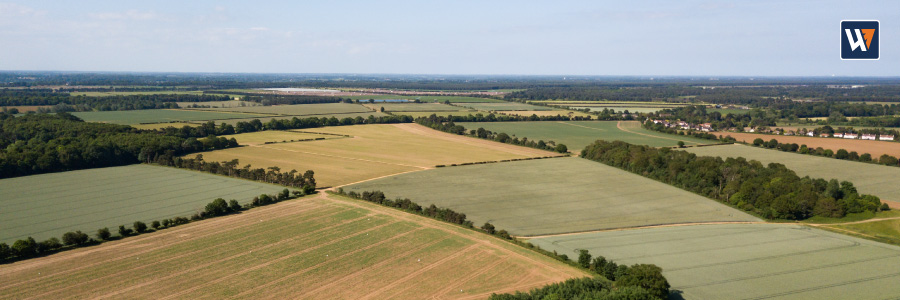Options on Retaining the Family Farm
 17th July 2025
17th July 2025
Farming can happen under many different arrangements. Whether that’s in-house, a tenancy where a landowner lets their land to another to farm, a Contract Farming Agreement (CFA) between a landowner (or tenant farmer) and a contractor, casual contracting on an ad hoc basis or machinery sharing. It’s important to understand each option to consider which is best for you.
Contract Farming Agreement (CFA)
A CFA, where a contractor looks after the day to day running of the farming operations, by its very nature creates both time and cost savings. It frees up time for the landowner or tenant which they can use to focus on other areas of the business (environmental schemes, diversification projects, Etc.) and creates savings through efficient operations, bulk purchasing discounts and the reduced need to purchase and maintain some machinery. It’s important, however, that the landowner maintains a presence and is involved in the decision making through regular contractor’s meetings to continue to benefit from tax reliefs which we will consider a little later.
As with any contract a CFA is not without risks. There is no statutory protection with a CFA, unlike with tenancy arrangements. The risk in a CFA is mitigated by having a detailed legal contract drawn up by a competent lawyer. The contract will provide protection but, as ever, the underlying relationship between the landowner/tenant and the contractor should be built on solid foundations of honesty and trust.
Tenancy
A tenancy, when working well, is a simple arrangement and is essentially just the renting of land to another to farm. The landlord hopefully gains a regular steady income, whilst their land is being well maintained by another. There is significantly less time involvement for the landlord, but they need to appreciate that, whilst they maintain legal ownership of the land, they lose control of said land.
From the tenant’s perspective they gain access to land that they might not otherwise be able to farm and for those fortunate enough to have AHA (Agricultural Holdings Act) tenancies that access is secured for life. Those on newer FBTs (Farm Business Tenancies) do not have that security, and whilst contracts might be for a reasonable length of time, that can hamper investment in the long run. Regardless of whichever type of tenancy is in place, it is the tenant that takes on all the risks and rewards of farming that is afforded to them by the markets.
Lets Consider the Taxes
Considering the taxes, a CFA preserves Income Tax, Capital Gains Tax and Inheritance Tax (IHT) benefits for the landowner, whilst under a tenancy arrangement a landlord is receiving rent for their land. They do not undertake a trade for Income Tax purposes and some reliefs are lost, whilst the tenant (assuming they actually farm the land) maintains the Income Tax reliefs.
For IHT purposes, Agricultural Property Relief (APR) is available to owner occupied land (land that the owner farms themselves, or farms under a CFA with a contractor) so long as it has been owned and used for agriculture for at least two years. If the land is let, then it must be owned and used for agriculture for at least seven years.
Contracting and tenancies have been a mainstay of farming for years now and many will be aware of the benefits and risks. However, with changes to IHT reliefs for farmers from April 2026, ignoring the IHT liabilities themselves, if the next generation isn’t interested in farming but wants to retain the family farm, then a CFA or tenancy achieves this. They could also be used where the older generation is reluctant to give away land, perhaps due to the in-experience or age of younger generations. Every case is different when it comes to IHT planning, so please do contact us if you need help or support.
Get In Touch
For more information or advice on options on retaining the family farm, contact your local Whitings office or your usual Whitings contact.








